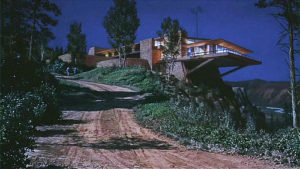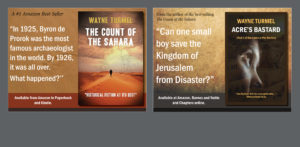Whenever I’m speaking to people about writing historical fiction, the question of “How much of it needs to be exactly true?” arises. For a long time I hemmed and hawed and couldn’t really define it. At long last I have an answer. Does it pass the “North by Northwest” test?
Allow me to digress a bit and I promise I’ll get to the point. One of the major points of contention in my marriage to the Duchess is Alfred Hitchcock’s movie, North by Northwest. (Not for nothing, but after 25 years if this is the biggest bone we have to pick with each other we’re doing just fine.) My bride loves that movie. After all, it’s got peak Cary Grant, a stylish Eva Marie Saint, and amazing visuals, including a rousing finale on the top of Mount Rushmore. What’s not to love?

Plenty. I don’t care for that movie and the reason is simple. There are two scenes that ruin the whole experience. First, there’s no cool Frank Lloyd Wright house on the top of Mount Rushmore. Secondly, crop-dusters make really inefficient murder weapons. Actually, the crop-duster is mainly the reason I don’t enjoy that film: I remember thinking, “oh come on,” when that scene came on and Grant was pursued through the Indiana cornfield by the airplane. By the time I got to the mid-century modern house placed on top of a national monument, which I know darned well doesn’t exist, I had detached emotionally from the movie and didn’t believe any of it. The spell was broken.

Still with me? For historical fiction to work, we have to stay in the moment. We have to believe that the story is taking place in the time, place, and with the characters the author has established. All authors manipulate events to make a good story. Often this doesn’t matter. In Acre’s Bastard, I have Lucca watch events from the top of a hill where he couldn’t possibly have been, but I made it work and unless you’ve been to Hattin, and seen the Horns, you wouldn’t know, and it’s not a critical detail. No harm no foul. On the other hand, I had to make sure that the famous characters did what we know they did, and acted believably or I’d have lost readers along the way. I couldn’t just have Lucca bump into Richard the Lionheart 7 years before he got there.
All historical novelists face this dilemma. Does your character say or do something that isn’t true to that time period? If so, your readers (and HF fans tend to be smarter than most, if I may be so bold) will say “oh come on,” and you’re dead in the water.
So here’s my guide to how true to the facts your book needs to be. Does it make the reader say, “Oh come on?” If so, you’ll lose credibility and your story won’t ring true.
In Count of the Sahara, the excursions and characters are well documented- heck, one of them is still alive. I had to be as accurate as possible. With Acre’s Bastard, the general facts of the time are known, but the characters are mostly fictional and there’s plenty of room for imagination.
Trust me, I pushed the boundaries but it’s not like I had a crop-duster chase Lucca all the way back to the city walls, or had Byron de Prorok snap a selfie (which the arrogant SOB would have, if he could have.)
I hope you read my stories and enjoy them. If so, let me (and Amazon!) know.
If you’d like me to speak to your book club, library or group about “Putting the Story in History- How Writers Turn Dry Facts into Great Fiction”, I’d be delighted. It’s available as an in-person talk or can be delivered by Webinar no matter where you are. Use the contact form on the side of the page to drop me a line.

